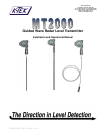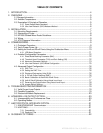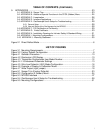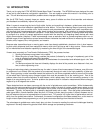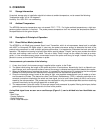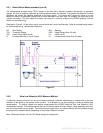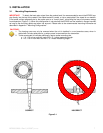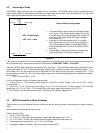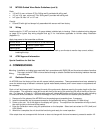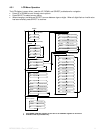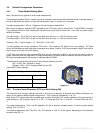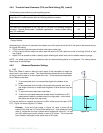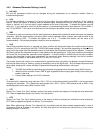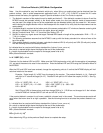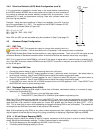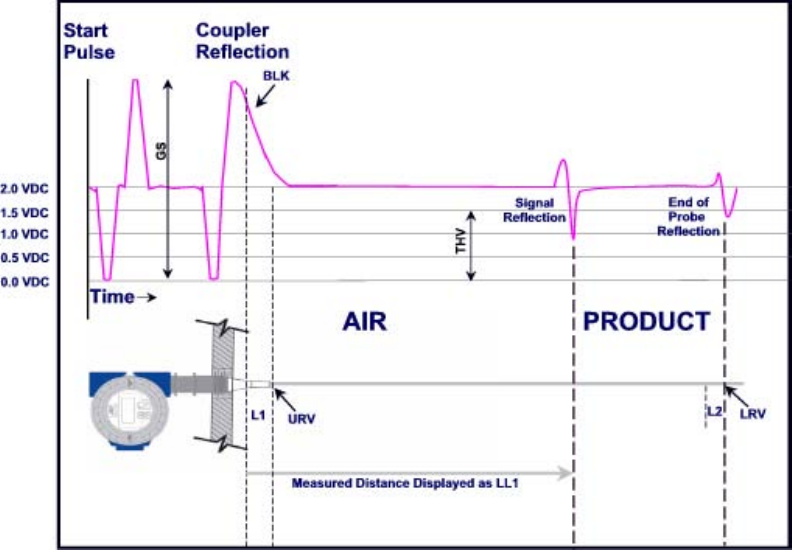
6 MT2000-0200-01 Rev f (10-2007)
DCN0160
2.3.1 Direct Reflect Mode (standard) (cont’d)
The measurement principle using TDR is based on the fact that a dielectric constant discontinuity or geometric
change will yield a negative pulse having certain amplitude below the baseline. The greater the dielectric constant
difference, the greater the negative amplitude of the return signal. This means that a signal will show up on the
baseline if there is a substantial change from a nozzle diameter to an open tank, for example, as signal plot at the
process connection. This fact needs to be taken into account in order to configure the MT2000 properly (Consult
section on commissioning).
Displayed in Figure 2.1 is the return signal, as one would see it on an oscilloscope. Refer to troubleshooting section
for oscilloscope set up. Abbreviations used are:
GS Gain Setting BLK Blanking
THV Threshold Voltage URV Upper Range Value (20 mA)
LRV Lower Range Value (4 mA) LL1 Liquid Level 1
L1 Unmeasurable Zone (Top of Probe) L2 Unmeasurable Zone (End of Probe)
2.3.2 Ultra Low Dielectric (ULD) Measure Method
To effectively measure the level of very low dielectric products a different methodology is needed due to the poor
reflection of the pulse on the surface of the product. This reflection is not strong enough to make a reliable level
measurement. To achieve reliable and precise measurement the MT2000 uses the Ultra Low Dielectric (ULD)
measurement method. This method requires the use of a flexible cable utilizing a weight / target assembly at the bot-
tom end of a precisely known length. The pulse travels through the air at a known velocity and then passes through
the product at a reduced velocity depending on the product dielectric constant.
Note: Reference Section 4.4.4 for ULD Mode setup and configuration.
Figure 2.1



